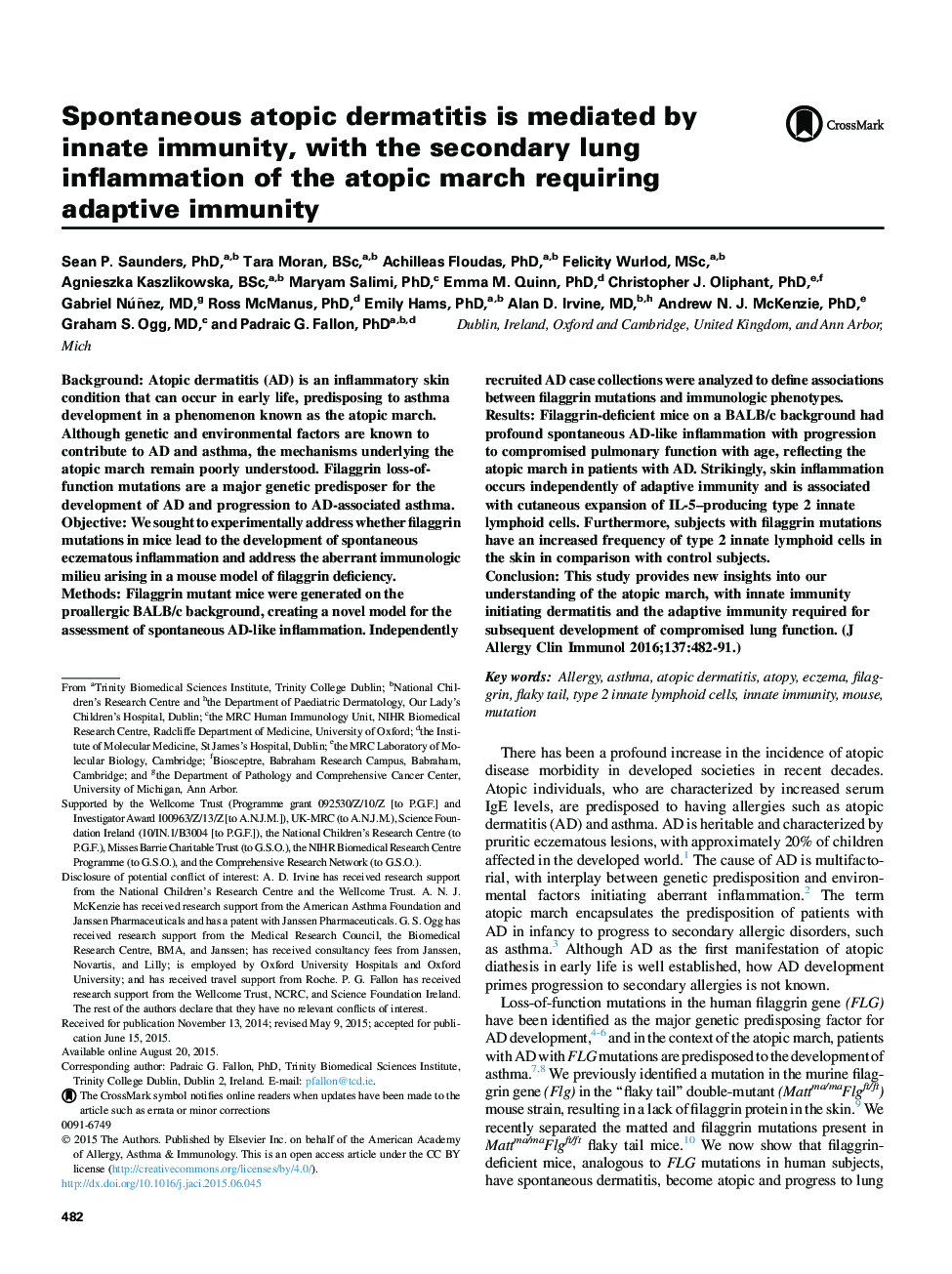| Article ID | Journal | Published Year | Pages | File Type |
|---|---|---|---|---|
| 6063624 | Journal of Allergy and Clinical Immunology | 2016 | 10 Pages |
BackgroundAtopic dermatitis (AD) is an inflammatory skin condition that can occur in early life, predisposing to asthma development in a phenomenon known as the atopic march. Although genetic and environmental factors are known to contribute to AD and asthma, the mechanisms underlying the atopic march remain poorly understood. Filaggrin loss-of-function mutations are a major genetic predisposer for the development of AD and progression to AD-associated asthma.ObjectiveWe sought to experimentally address whether filaggrin mutations in mice lead to the development of spontaneous eczematous inflammation and address the aberrant immunologic milieu arising in a mouse model of filaggrin deficiency.MethodsFilaggrin mutant mice were generated on the proallergic BALB/c background, creating a novel model for the assessment of spontaneous AD-like inflammation. Independently recruited AD case collections were analyzed to define associations between filaggrin mutations and immunologic phenotypes.ResultsFilaggrin-deficient mice on a BALB/c background had profound spontaneous AD-like inflammation with progression to compromised pulmonary function with age, reflecting the atopic march in patients with AD. Strikingly, skin inflammation occurs independently of adaptive immunity and is associated with cutaneous expansion of IL-5-producing type 2 innate lymphoid cells. Furthermore, subjects with filaggrin mutations have an increased frequency of type 2 innate lymphoid cells in the skin in comparison with control subjects.ConclusionThis study provides new insights into our understanding of the atopic march, with innate immunity initiating dermatitis and the adaptive immunity required for subsequent development of compromised lung function.
